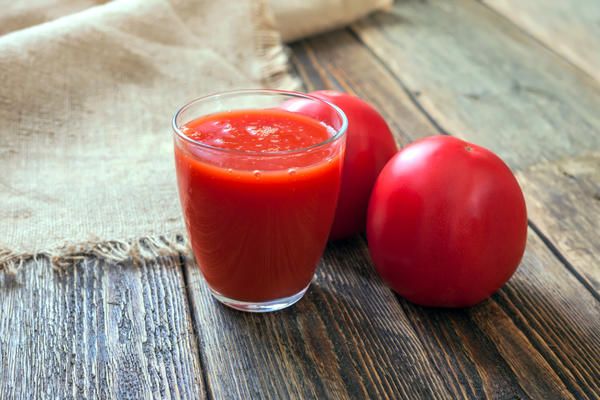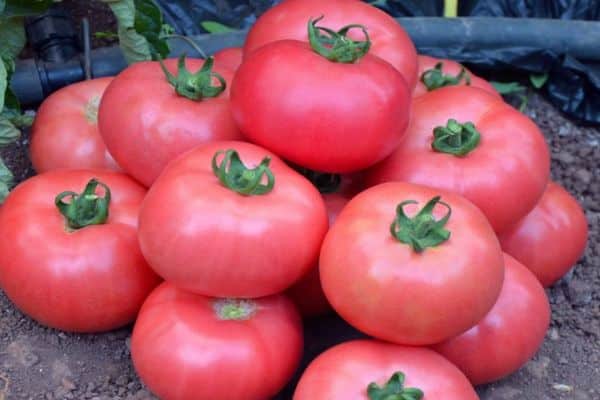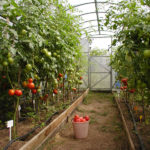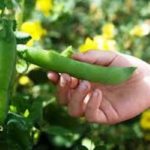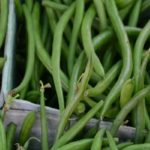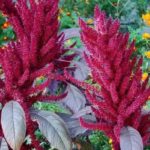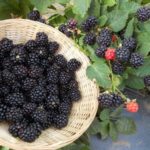Tomato Tourmaline is pink with a raspberry tint. Taste qualities with pronounced sweetness. Has beneficial properties for the body. Such fruits accumulate a lot of sugars, macro and microelements, in particular selenium, which prevents aging.
Description of tomato
This variety has a mid-early fruiting period. It has excellent taste. The plant is short, no more than 70 cm high. Well suited for cultivation in film greenhouses and open beds.
In mid-March and early April, seeds are planted for seedlings. Picking is done after the formation of the first pair of true leaves.Seedlings are grown for about 35 days.
From the second ten days of May and early June, depending on climatic conditions, seedlings are planted in open soil. In garden beds, tomatoes of the Tourmaline variety are grown without shaping (pinching), and in greenhouses the formation is carried out in one stem with the first inflorescence planted after the 6th leaf. The next inflorescences are formed through 2 leaves.
Fruit characteristics
The fruits of this variety are pink (raspberry) in color. The shape of the fruit is round. The surface of the skin is smooth. Weight is about 170 g, but individual specimens can grow up to 220 g.
Given their excellent taste, they are suitable for freshly prepared salads, as well as for tomato products (juices, fruit drinks, purees, etc.).
The variety stands out for its increased fruiting. If agricultural practices are followed, the yield of one bush is up to 5 kg of tomatoes. It is quite resistant to fruit cracking and is not susceptible to the main types of diseases of nightshade crops.
Tomatoes are very sensitive to heat. Favorable temperature conditions for seed germination, plant development and fruit growing are 20-25°C. When the temperature drops below 15°C, flowering and ovary formation stop, and if the temperature drops below 10°C, their vegetation stops. Plants die at 1-3°C, and if the temperature is above 35°C, pollination stops.
Note! Sufficiently warmed sandy loam soils with an acidity pH of 6-6.5 are suitable for the agricultural technology of these tomatoes.
It is strictly prohibited to cultivate tomatoes after potatoes and other nightshades, including after tomatoes, to prevent the occurrence of diseases.
Reviews
Gardeners speak positively about the Tourmaline variety.
Vasily, Nizhny Novgorod: “In the fall, Tourmaline prepared the ground for the tomato.I added compost, ground eggshells and some wood ash to the soil. I planted the seedlings in heated soil in late May. I got healthy plants and a good harvest.”
Anna, Belgorod region: “On the advice of a neighbor in the country, I purchased Tourmaline tomato seeds. I sowed it in mid-March, carried out picking in three stages and got excellent seedlings. At the beginning of May, I planted it in a film greenhouse, burying the plants up to the first leaves. She promptly removed unnecessary shoots, forming two stems. I fed it with combined fertilizers. The yield was 4–4.5 kg of fruit weighing up to 180 g.”
Varvara, Kursk region: “Last year I bought raspberry-colored tomatoes (the seller explained that these are the Tourmaline variety). My family and I ate some of it fresh, and the rest we preserved for the winter. We were pleased with these tomatoes. Next year I will definitely plant tomatoes of this variety on my plot.”


